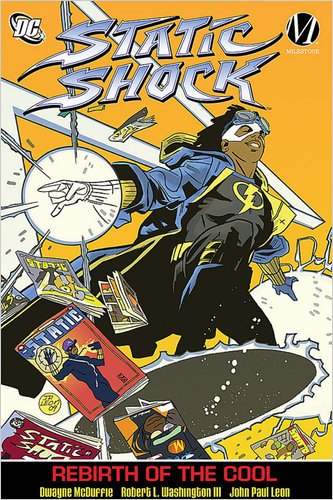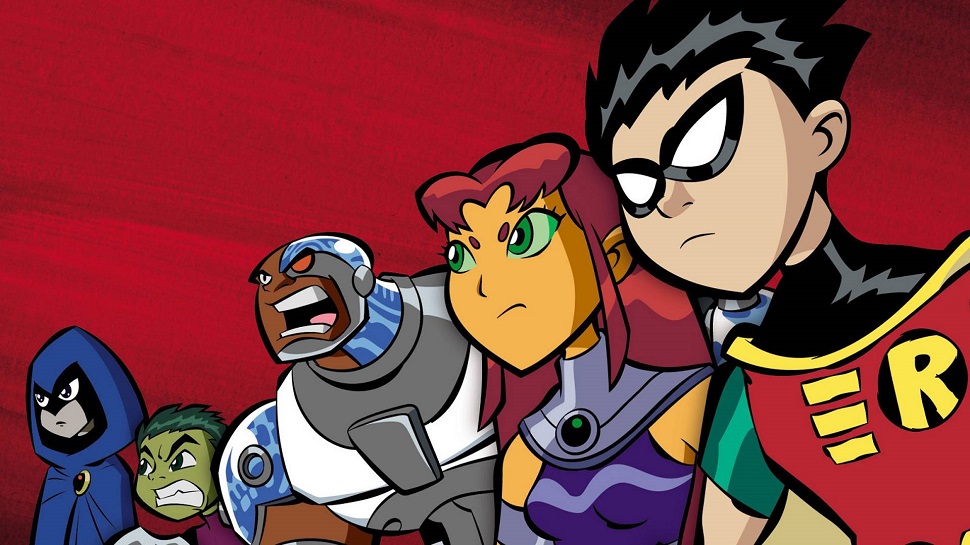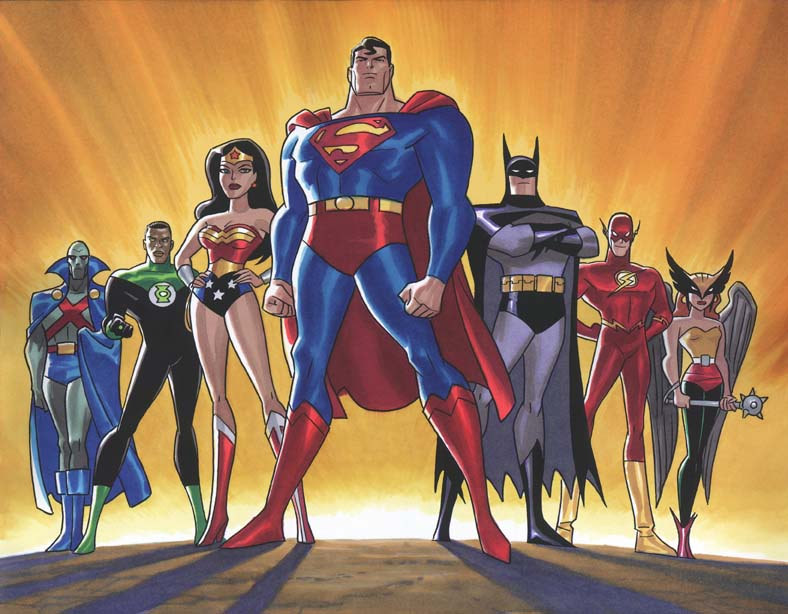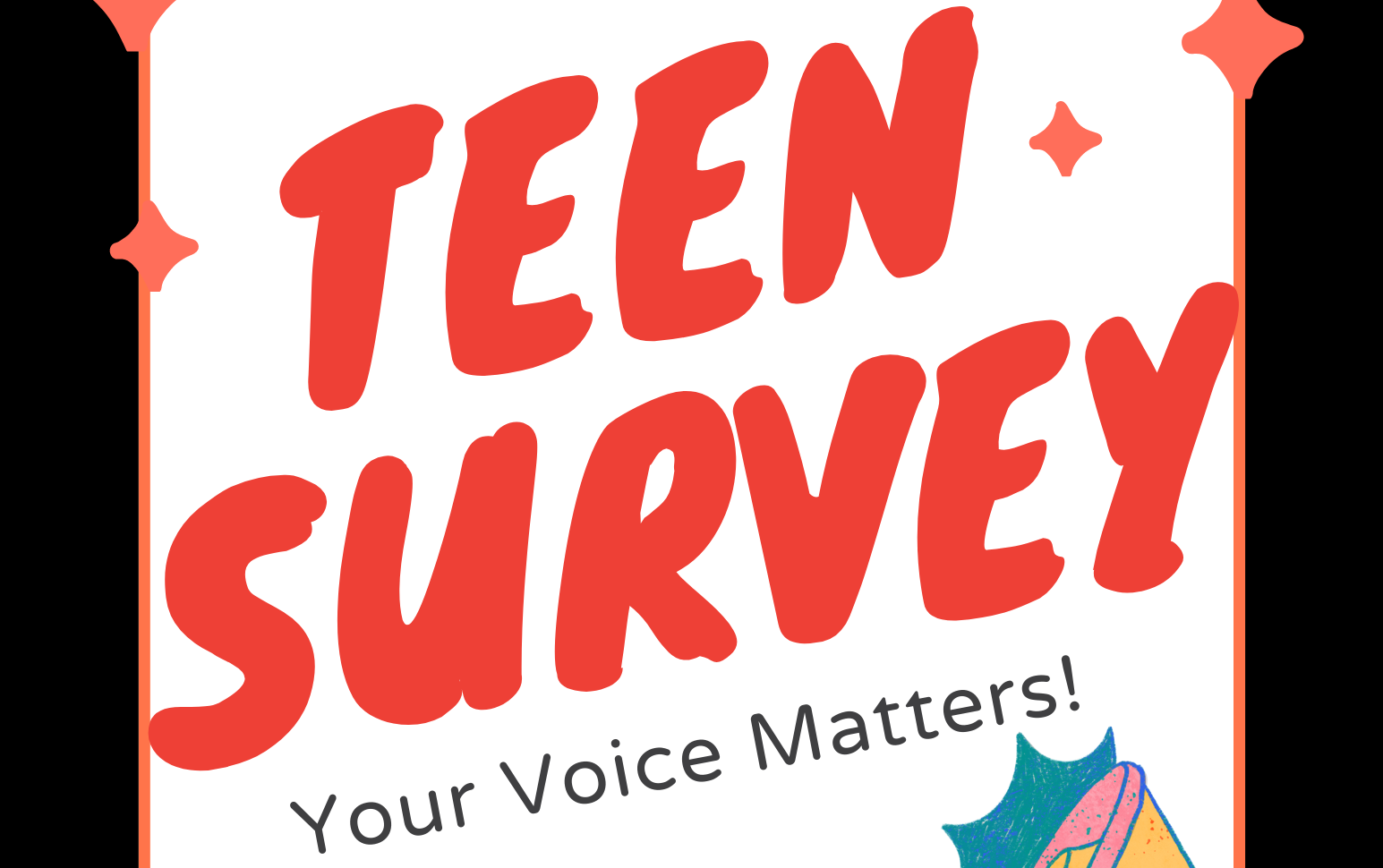Since its 1960 comic book debut, DC Comics’ The Justice League has been bringing together the likes of Superman, Batman and Wonder Woman (even serving as the kick in the caboose that got DC rival Marvel Comics writer Stan Lee to create the Fantastic Four and the Avengers). For post-millennials, “Justice League” and its follow-up animated series, “Justice League Unlimited” (2004-2006) were the stepping stones into the world of capes, secret identities and out-of-this-world abilities (impeccable voice-acting among them). Though the DC animated universe took a left turn after the show’s cancellation, it has served as the gold-standard for superpowered cinema ever since. In honor of the Spectacular Seven’s first big screen appearance due in theaters Nov.17, here are the three big things that made the 2001-2004 Cartoon Network “Justice League” animated series one of the most important for the newest generation.
1. Thanks to Justice League, John Stewart became popular
In DC Comics, the Green Lantern Corps is known to be a galaxy-wide recruitment force of what amounts to space marines with an affinity for green and vulnerability to yellow. However inexplicably, it wasn’t until 1971 that Earth’s green lantern wasn’t just another white guy. Enter, DC Comics’ first African-American superhero, John Stewart!
As the previous Green Lantern, Hal Jordan, was on Earth getting a crash course in race relations. After an encounter where an older black man questioned Jordan about why he “never bothered with . . . the black skins” (Green Arrow/Green Lantern #87), Hal ran into Stewart for the first time. Jordan couldn’t handle his current assignment, so the Guardians of the Universe (small, big-headed, blue guys who made the lantern rings) chose John Stewart as his back-up. Jordan attempted to refuse Stewart’s acceptance into the corps, and the little blue people chided him for his bigoted stance on the matter. Insisting he wasn’t a racist, Jordan took Stewart on his first green lantern mission — to protect a racist senator running for president. (Sure, Hal, we believe you’re not racist now.)

Sadly, due to poor writing and no love for the character, John Stewart was never the most popular Green Lantern, repeatedly failing to hold down his own solo comic book series. Consequently, when Stewart was the only lantern in the 2001 animated series “Justice League” with no mention of any of Earth’s other lanterns, some expected the worst but were quickly proven wrong. Voice actor Phil Lamarr (voice of Static Shock, Samurai Jack and Hermes from “Futurama”) gave life to Stewart’s authoritative attitude with a smooth, bassy and instantly recognizable cadence, while the writing lent the character the depth he was missing in his initial comic book appearances. Stewart was also involved in a love triangle with Hawkgirl and Vixen, which made him instantly popular with fans. In the “Justice League Unlimited” series, the episodes “Starcrossed” (Parts 1-3), “Secret Origins” (Part 2) and “In The Blackest Night” showcase the absolute best of John Stewart.
Not only was this many 2000s kids’ first time seeing a black superhero, but it was also the first time a black character was treated as honest instead of a token or non-player in the plot. John Stewart was an integral part of the league and of the collective memory of the show as a whole. Now, when people ask if Green Lantern will appear in the new big screen “Justice League,” we fancast actors that look like Idris Elba or Tyrese Gibson, not Armie Hammer or Matt Damon.
2. Justice League introduced us to the writing of Dwayne McDuffie!
In 2003, an African-American writer named Dwayne McDuffie joined the staff of the “Justice League” cartoon. His pairing with “Batman: The Animated Series” creator Bruce Timm led to masterful, original storytelling. McDuffie was added to the writing staff when the show was unexpectedly greenlit for a third season, boastfully titled “Justice League Unlimited,” which expanded the League’s roster from seven founding members to dozens of heroes. McDuffie had absolutely no problem writing for all these different characters. He’d come to the series fresh off creating his “Static Shock” cartoon series and was a much-wanted commodity.
 McDuffie was an absolute revolutionary in the comic book community. Ten years prior, in 1993, Dwayne McDuffie and Denys Cowan co-created Milestone Media, a coalition of African-American artists and writers assembled to address underrepresented minorities in the comics industry. Milestone Comics went on to have some of the biggest industry impact of the last 20 years. McDuffie not only co-created Milestone, but he created the character of Static, later known by every 2000s kid as Static Shock.
McDuffie was an absolute revolutionary in the comic book community. Ten years prior, in 1993, Dwayne McDuffie and Denys Cowan co-created Milestone Media, a coalition of African-American artists and writers assembled to address underrepresented minorities in the comics industry. Milestone Comics went on to have some of the biggest industry impact of the last 20 years. McDuffie not only co-created Milestone, but he created the character of Static, later known by every 2000s kid as Static Shock.
McDuffie wrote six volumes of Static, exploring Virgil Hawkins’ world as a black teenager growing up in a South Dakota ghetto with enough electrical prowess to power his whole city. The company also broke boundaries with Icon, their Black Superman, and lived up to McDuffie’s mission: “If you do a black character or a female character or an Asian character, then they aren’t just that character. They represent that race or that sex, and they can’t be interesting because everything they do has to represent an entire block of people. You know, Superman isn’t all white people and neither is Lex Luthor. We knew we had to present a range of characters within each ethnic group, which means that we couldn’t do just one book. We had to do a series of books and we had to present a view of the world that’s wider than the world we’ve seen before.”
Though the comics company was eventually dissolved, its characters survived thanks to a publishing and distribution deal with DC. Static, Icon and McDuffie’s Milestone menagerie live on in the DC animated universe and in comics as “Earth M” in the DC multiverse. But wait, there’s more! After the success of Justice League and Static, McDuffie went on to help create and write for “Ben 10,” “Teen Titans” and “What’s New Scooby Doo,” along with a host of incredibly successful DC animated movies.
Regrettably, McDuffie passed away in 2011, the day before the release of his “All-Star Superman” animated movie, but his works live on in my DVD collection, in my heart, and certainly in the memories of the generation who grew up with his content. Before you see the new feature film “Justice League” starring Ben Affleck, Gal Gadot, Jason Momoa, Ezra Miller and Ray Fisher, make sure to check out McDuffie’s run on the Justice League of America comic issues 13 to 22 (2007-2009) and the rest of his extensive content gallery.
3. JL gave us the origins of the Teen Titans (2003-2006) voice cast
OK, this is my favorite fun fact from the “Justice League” cartoon and one that very few people know, but the voices of Robin, Cyborg, Beast Boy, Starfire, and Raven originally tested their mettle as a teen supervillain team in the 48th and 49th episodes of Justice League (2001). In the second season episodes “Wild Cards” (Parts 1 & 2), the Joker (Mark Hamill) and Harley Quinn (Arleen Sorkin) buy air time on all TV stations to host a game-show in which the Justice League must disarm 23 joke bombs in Las Vegas to find the one real bomb. When Joker realizes that the combined powers of the League are more than enough to handle his plot, he sends in the Royal Flush Gang, a group of card-based bandits consisting of King (Scott Menville / Robin); Ten (Khary Payton / Cyborg); Jack (Greg Cipes / Beast Boy); Ace (Hynden Walch / Starfire); and Queen (Tara Strong / Raven). The episodes are some of the most intentionally funny, nail-biting and perhaps the most emotionally packed of the series. Additionally, if you grew up watching “Teen Titans,” you’ll get a taste of how the voice cast bounces off of each other and how their voices evolved into the most recognizable ones in voice acting.
 From 2001 to 2006, over two series and 91 episodes, “Justice League” was a tour-de-force where each and every creator, writer and voice actor brought their best to the table. It was an animated series that propelled its medium and genre to the forefront of its possibilities, capturing the hearts and minds of its viewers along the way. Though “Justice League United” was ultimately the book end of an amazing animated legacy, it continues to serve as the high-water mark for those it has inspired. All good things must come to an end. Justice League and the DC Animated Universe, at least, ended with a roar.
From 2001 to 2006, over two series and 91 episodes, “Justice League” was a tour-de-force where each and every creator, writer and voice actor brought their best to the table. It was an animated series that propelled its medium and genre to the forefront of its possibilities, capturing the hearts and minds of its viewers along the way. Though “Justice League United” was ultimately the book end of an amazing animated legacy, it continues to serve as the high-water mark for those it has inspired. All good things must come to an end. Justice League and the DC Animated Universe, at least, ended with a roar.
As 2017 winds down, comic-book fans now find themselves plotting a course to the next nearest attraction, and “Justice League’s” Nov. 17 live-action big-screen debut in theaters is circled in red with exclamation and question marks surrounding it.
 Khalil, 17, attends Druids Hills High School and is a co-host of the VOXCast.
Khalil, 17, attends Druids Hills High School and is a co-host of the VOXCast.




